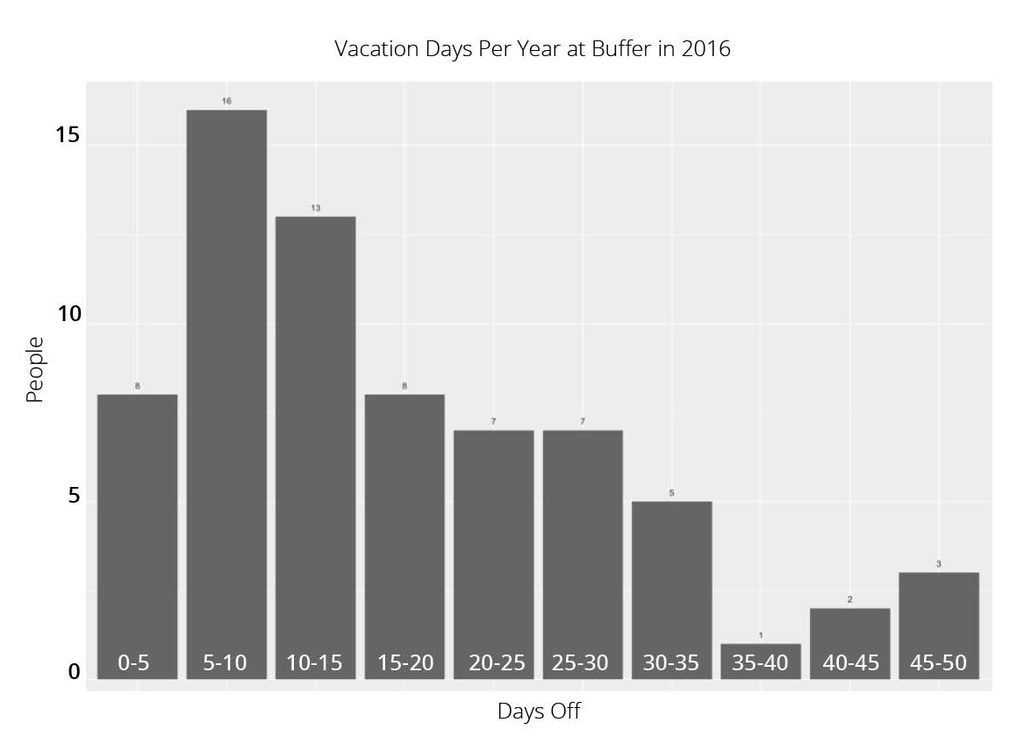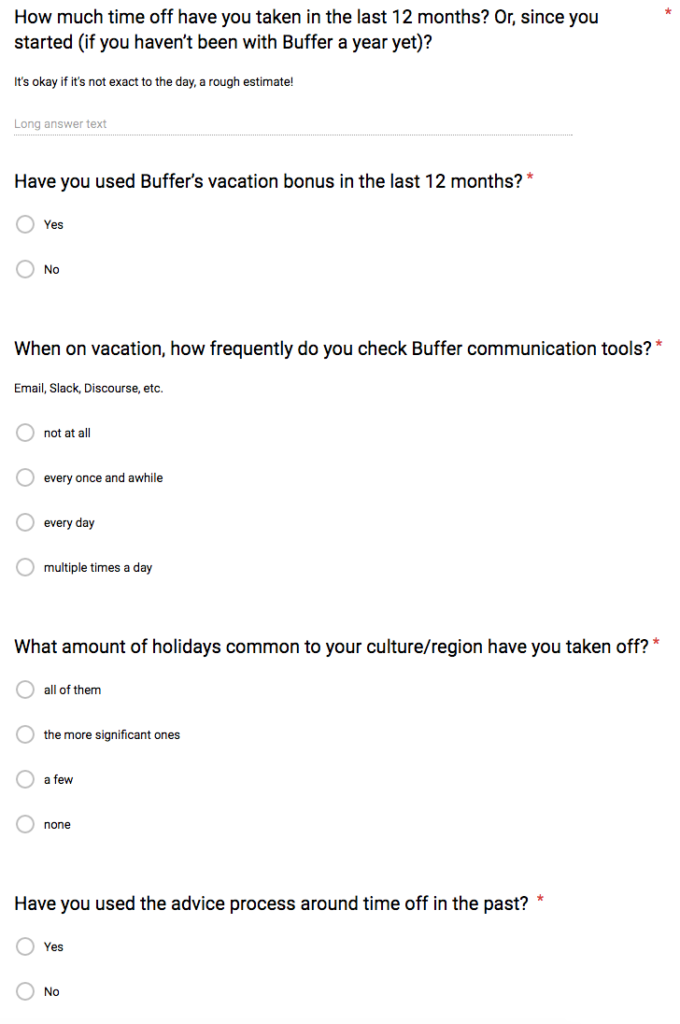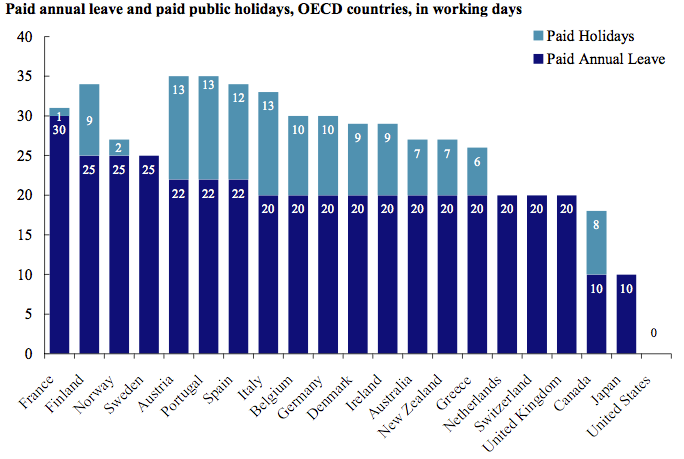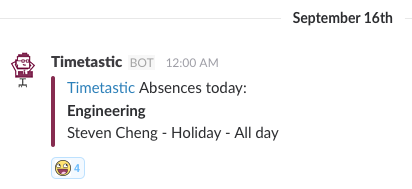It’s one of those mythical and vaunted startup perks, and one of the Buffer perks that tends to entice folks the most: unlimited vacation time.
When someone new joins the team, they’re immediately granted as much time away from work as they’d like, no questions asked.
Under this non-policy policy, teammates have had some great vacations, including cruises around the world and even a month of sailing the Atlantic.
But is it really that simple?
Well, yes and no.
Buffer’s unlimited vacation policy is incredibly generous. But as we’ve grown and evolved, we’ve also gotten some great signals that it can be a bit confusing to know when and how to take time off.
When we surveyed our team to get their anonymous thoughts, we began to see a theme emerging. Here’s a sample of comments:
- “It’d be really cool if we could make clearer taking vacation off and how to approach expensing things.”
- “I think some sort of recommended range of time off can be really helpful.”
- “I’m still struggling to figure out how to plan time off and if I should be asking for permission/advice before making plans.”
- “A bit nervous, with a feeling of guilt and uncertainty about how taking the time off would make the team feel.”
Taking time off and recharging is critical to doing your best work, so we knew we wanted to help everyone on the team feel great about planning and taking restorative time away.
Solving the ‘unlimited’ challenge
Looking out at the landscape of likeminded tech companies, there are some cool and innovative ways to begin to solve this challenge.
- At Kik, it’s mandatory for employees to take at least one week off every four months. Its offices also close for two weeks around the holidays.
- FullContact pays a whopping bonus of $7,500 to employees who take a vacation.
- HubSpot makes all employees take at least two weeks of vacation every year.
- Evernote offers a vacation bonus of $1,000, which we also tried at Buffer in 2015. We’ll likely bring it back once we fully emerge from our cashflow crisis!
Until that time, we needed a way to help teammates feel guilt-free about taking time off and to reduce the cognitive load of figuring out how and when to take time away.
We started by getting a baseline. Julian on our data team was kind enough to export our shared Google Cal where teammates log vacation days and holidays (yes, it can get a bit crowded there!) so we could take a look.
We found that the vast majority of our teammates were taking in the range of 5-10 days per year (not quite enough, in our opinion), followed closely by the 10-15 day range (getting closer!).

Buffer is a global company, bringing together teammates from many different countries, cultures, and norms when it comes to time off. So we needed to take into account quite a few perspectives.
Our team survey asked a variety of questions around the topic of vacation time. Here’s a look:

Results showed that there was a wide spectrum in terms of the amount of days off teammates felt comfortable taking—everything from 0 days to about 4 weeks. The mean from a sample size of 55 responses was 9.1 days, which is fairly in line with what the Google Cal data showed us.
What’s the right amount of time off?
So, is that enough? Across the world, paid vacation time varies quite a bit but generally is in the 20-day range.

And although the US is the only developed country with no minimum protected vacation time, we learned that the average private sector U.S. worker receives 16 paid vacation days and holidays.
The average number of paid vacation days offered by U.S. private employers is generally:
- 10 days after 1 year of service
- 14 days after 5 years
- 17 days after 10 years
- 20 days after 20 years
Using these data points, we determined that we’d love to see folks take a minimum of 3 weeks vacation time, in addition to extra time off for the holidays teammates choose to celebrate.
How could we gently guide more teammates into the 15-20 day range while still keeping the freedom of our no-policy policy?
Introducing minimum vacation recommendations
Here’s what we came up with: An experiment with minimum vacation recommendations!
- We encourage team members to take a minimum of 3 weeks (15 work days) of vacation time throughout the year, in addition to the holidays (bank, religious or otherwise) they choose to observe.
- There is no maximum vacation recommendation, though there may be more and longer conversations for unique situations in which a teammate might want to take, say, 6–8 weeks off.
- Buffer is privileged to be a global team; we ask teammates to take time off that’s in line with their country’s standards even if it’s generally a bit more than our recommendation.
- It’s generally great to begin to take time off after you’ve been at Buffer for about 3 months.
- This time is separate from holidays teammates choose to celebrate, and outside of sick/personal days, bereavement/compassionate leave, and family leave.
A bit more detail on combining vacation/holiday time
Each teammate is free to combine vacation time and holiday time for their custom choice of time off. So in a year at Buffer, here are some theoretical totals:
- A teammate in Australia might take 17 days of vacation and 7 holidays
- A teammate in the U.S. might take 15 days of vacation and 8 holidays
- A teammate in France might take 25 days of vacation and 5 holidays
- A teammates in Canada might take 20 days of vacation and 7 holidays
When we compare our time off to paid leave across the world, it might look something like this (the totals highlighted in yellow on the right are hypothetical examples only!)

When and how we share vacation plans
Beyond sharing recommendations, we also have tried to get much more explicit in terms of describing the best way to share and record time off. We have asked teammates to share plans in advance with their team leads using the following general guidelines:
- For a half day or less, 3 days in advance
- For 1–3 days off, 2 weeks in advance
- For longer time off, a month or more in advance is great
And we’ve added to our list of tools an app called Timetastic that we hope will make it easier to:
- Ask for and receive vacation time
- Track time taken to make we’re all getting enough recharging time
- Allow all of us to see who’s out of the office at a glance

Timestastic even allows us to see all team vacations in a super convenient Slack channel:

Buffer’s “People team” (which I am a part of) will keep track of time off on a high level, solely for the purpose of nudging people who haven’t take time to disconnect in a while.
Over to you!
Like many things we do at Buffer, this is a new experiment and we don’t have all the answers. We’re keen to keep a pulse on how these recommendations work and whether we begin to see vacation time inching up. We’re planning check-ins at 3 months and 6 months and we’ll keep you posted here.
In future iterations of these recommendations, we’re hopeful to explore ideas like sabbaticals/longer-term unpaid leave outside of family leave and increased recommended vacation time for teammates that have been with Buffer for a longer time. We’ll also be working on more guidance for team leads on encouraging more time away.
How much vacation time feels ideal to you? How much do you take currently? What might convince you to take more? This topic is a fascinating one for me. If you’ve got thoughts, questions or feedback to share, we’d be so grateful to hear it!
Try Buffer for free
190,000+ creators, small businesses, and marketers use Buffer to grow their audiences every month.



